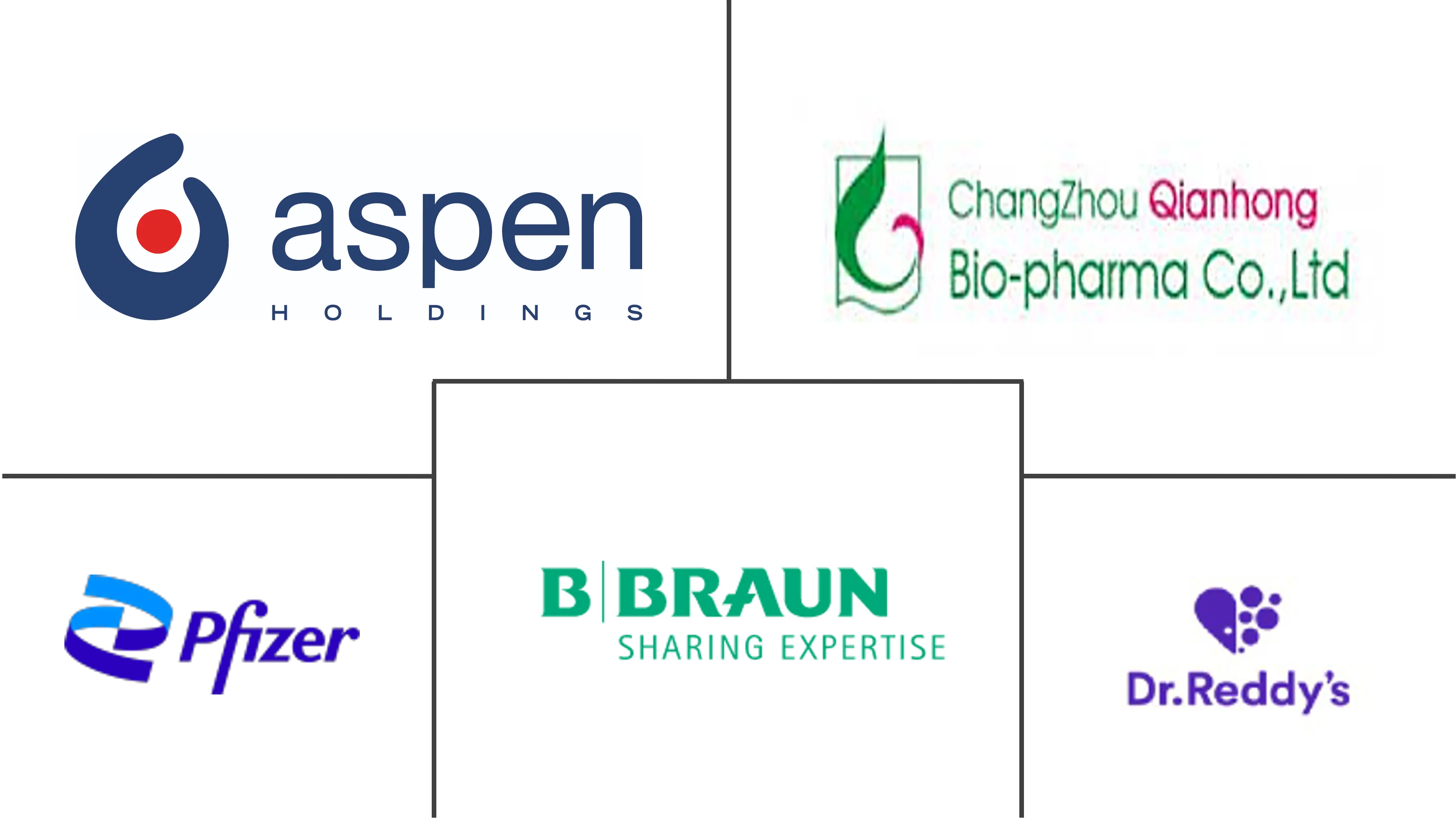Global Low Molecular Weight Heparin Market Size and Share
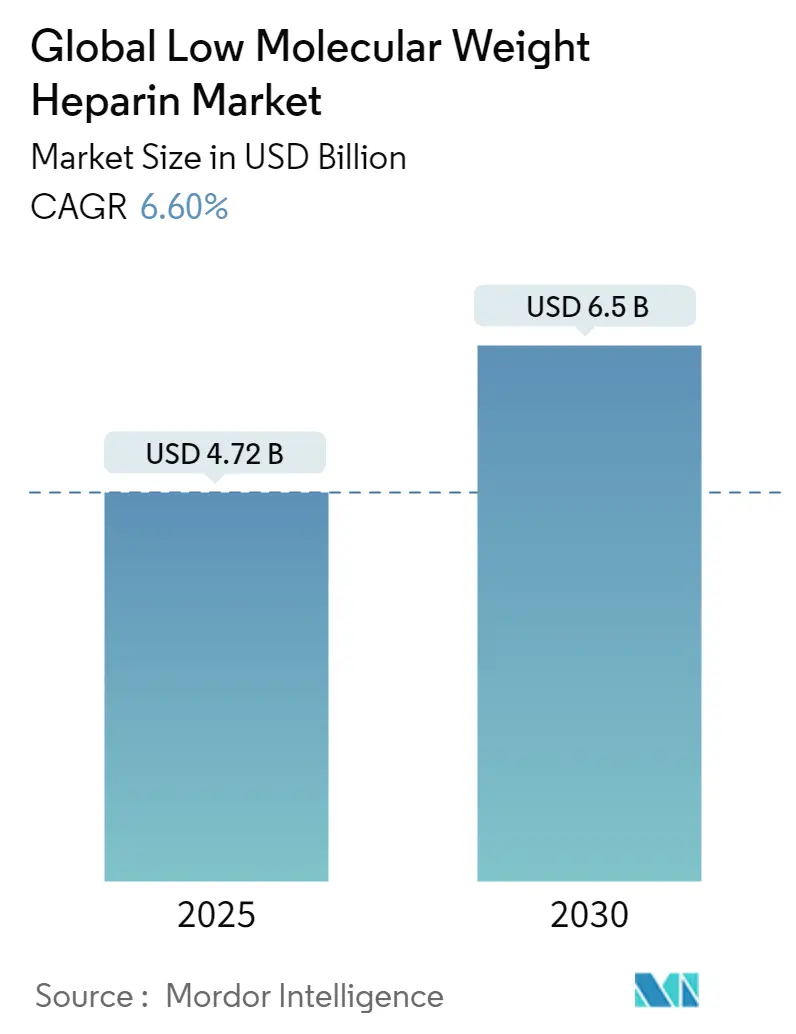
Global Low Molecular Weight Heparin Market Analysis by Mordor Intelligence
The Global Low Molecular Weight Heparin Market size is estimated at USD 4.72 billion in 2025, and is expected to reach USD 6.50 billion by 2030, at a CAGR of 6.6% during the forecast period (2025-2030).
The increasing prevalence of blood disorders and the introduction of low-molecular-weight heparin (LMWH) anticoagulants are among the significant factors driving the growth of the market. For instance, the study published in the Journal of Cureus in October 2023 reported the prevalence of deep vein thrombosis was 7% among adult surgical patients in Aseer Central Hospital in Saudi Arabia. Deep vein thrombosis is the most common preventable cause of death in hospitals, accounting for 10% of all deaths from pulmonary embolism (PE), which occurs when a blood clot from a vein in the leg travels to the lungs. Similarly, according to the Leukemia and Lymphoma Society (LLS), around every 3 minutes, one individual in the United States is diagnosed with leukemia, lymphoma, or myeloma. Moreover, as per the same source, 184,720 people in the United States were estimated to be diagnosed with leukemia and lymphoma in 2023. In addition, 89,380 people were expected to be diagnosed with lymphoma in the United States in 2023, with 8,830 new cases of Hodgkin's lymphoma and 80,550 new cases of non-Hodgkin's lymphoma. Low-molecular-weight heparin is used for the prevention of blood clotting and is indicated for venous thromboembolism, other thrombolytic disorders, and blood cancers. Thus, the rising cases of such disorders are likely to fuel the demand for low-molecular-weight heparin products.
According to the National Institutes of Health (NIH) data published in February 2022, LMWH such as dalteparin and enoxaparin is used to prevent venous thromboembolic disease (VTE) during an acute or elective hospital stay, as well as to treat deep vein thrombosis (DVT) and pulmonary embolism (PE). As per the same source, over half of the patients admitted to hospitals who are severely ill are at risk of thromboembolic illness, and VTE is responsible for 5% to 10% of hospital mortality, necessitating accurate VTE risk assessment and effective treatment. Such instances will likely positively impact the market's growth over the forecast period.
Therefore, owing to factors such as the increasing prevalence of blood disorders and the significant effectiveness of LMWH, the market is anticipated to witness growth over the forecast period. However, the adverse effects of low molecular weight heparin are likely to impede market growth.
Global Low Molecular Weight Heparin Market Trends and Insights
The Deep Vein Thrombosis Segment is Expected to Witness Significant Growth During the Forecast Period
Deep vein thrombosis (DVT), also known as venous thrombosis, occurs when a thrombus (blood clot) forms in veins deep within the body due to injury to the veins or sluggish blood flow. Blood clots can fully or partially stop blood flow through a vein. DVTs are commonly found in the lower leg, thigh, or pelvis but can also occur in the arm, brain, intestines, liver, or kidney.
The increasing prevalence of DVT is one of the major factors driving the segment's growth. For instance, in September 2023, according to the study published in Frontiers in Medicine, the prevalence of DVT was 7.6% in patients with liver cirrhosis. Additionally, in May 2023, another study published in Frontiers in Cardiovascular Medicine reported that the incidence of DVT was 9.3% among patients with acute and chronic spinal cord injury.
As LMWHs are more effective than no prophylaxis in preventing DVT and pulmonary thromboembolism in high-risk general surgical patients, the demand for LMWH in patients suffering from DVT is anticipated to increase over the coming years, driving the segment’s growth. Hence, owing to the above factors, the adoption of these products will likely increase among the target population, driving the segment’s growth.
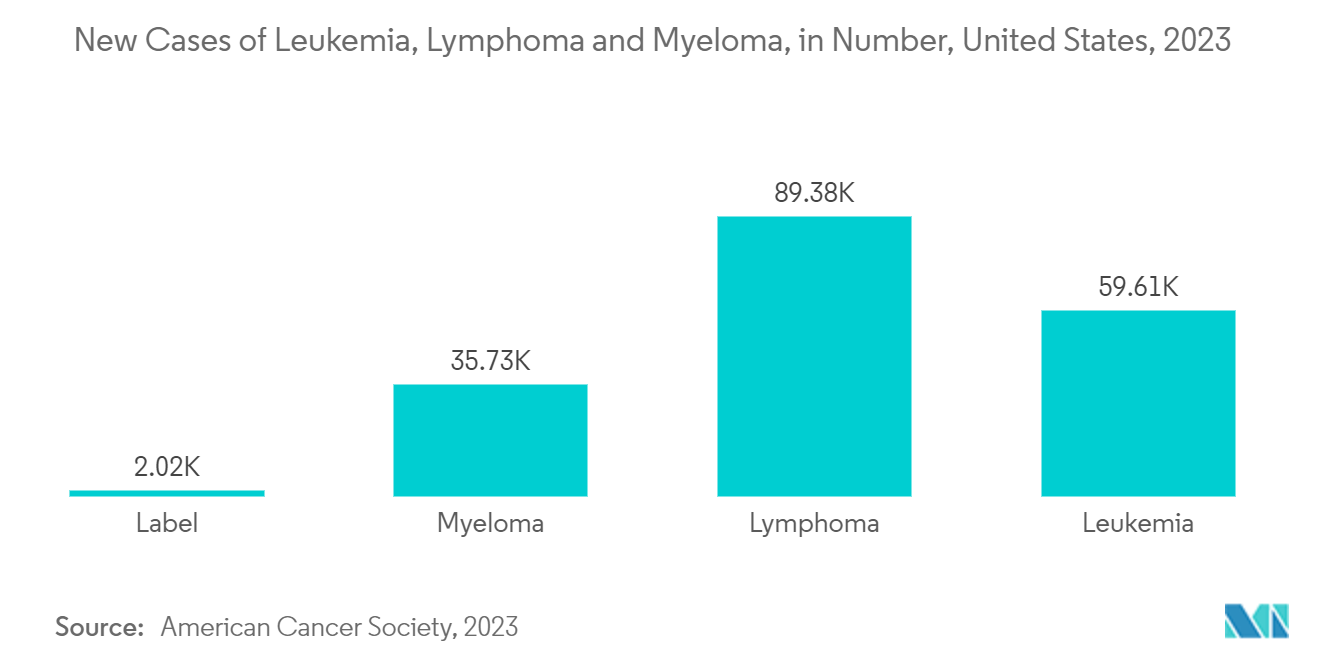
North America is Expected to Dominate the Low Molecular Weight Heparin Market
North America is expected to dominate the market due to the growing burden of diseases, the rising geriatric population, and the rising number of product approvals. For instance, the statistics published by the United Health Foundation highlighted that there were more than 58 million individuals aged 65 and above in the United States, representing 17.3% of the nation's population, in 2022; the figure is estimated to reach 73.1 million, or 22%, by 2040. As the risk of venous thromboembolism is strongly associated with age, the demand for LMWH will also likely increase.
In January 2024, the data update by the National Center for Biotechnology Information showed that up to 200,000 people in the United States were affected with deep venous thrombosis. Among those, 50,000 cases resulted in pulmonary embolism. Deep venous thrombosis (DVT), which leads to pulmonary embolism (PE), is the third most common cardiovascular disease after myocardial infarction and stroke. Such an increase in the target population will ultimately boost the adoption of LMWH products, positively impacting market growth.
Therefore, factors such as the growing burden of the geriatric population and the high prevalence of blood disorders are expected to contribute to market growth.
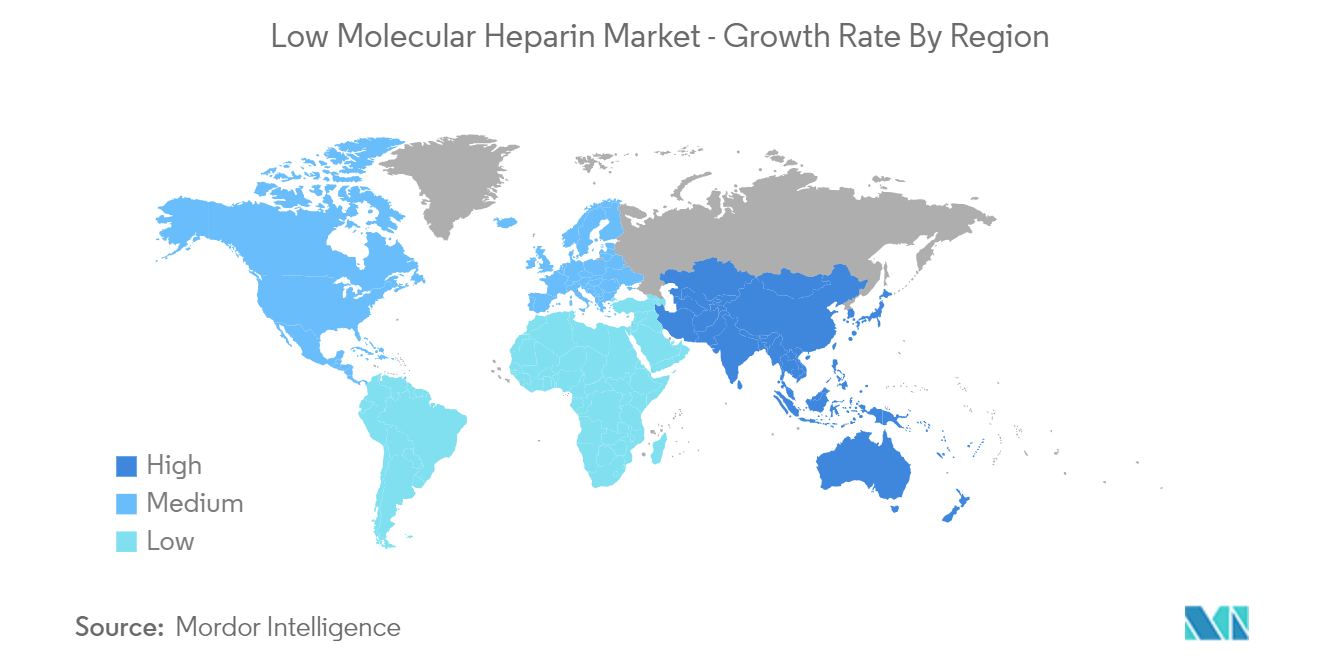
Competitive Landscape
The low molecular heparin market is moderately competitive due to the presence of several companies operating globally as well as regionally. The competitive landscape includes an analysis of a few international and local companies holding major market shares. Some of the key players include Changzhou Qianhong Bio-Pharma, Aspen Holdings, Leopharma A/S, Teva Pharmaceutical Industries Ltd, Sanofi, Dr. Reddy's Laboratories Limited, B. Braun Medical Inc., Pfizer Inc., Abbott, and Novartis AG.
Global Low Molecular Weight Heparin Industry Leaders
-
Aspen Holdings
-
Changzhou Qianhong Bio-Pharma
-
B. Braun Medical, Inc.
-
Pfizer, Inc.
-
Dr. Reddy's Laboratories Limited
- *Disclaimer: Major Players sorted in no particular order
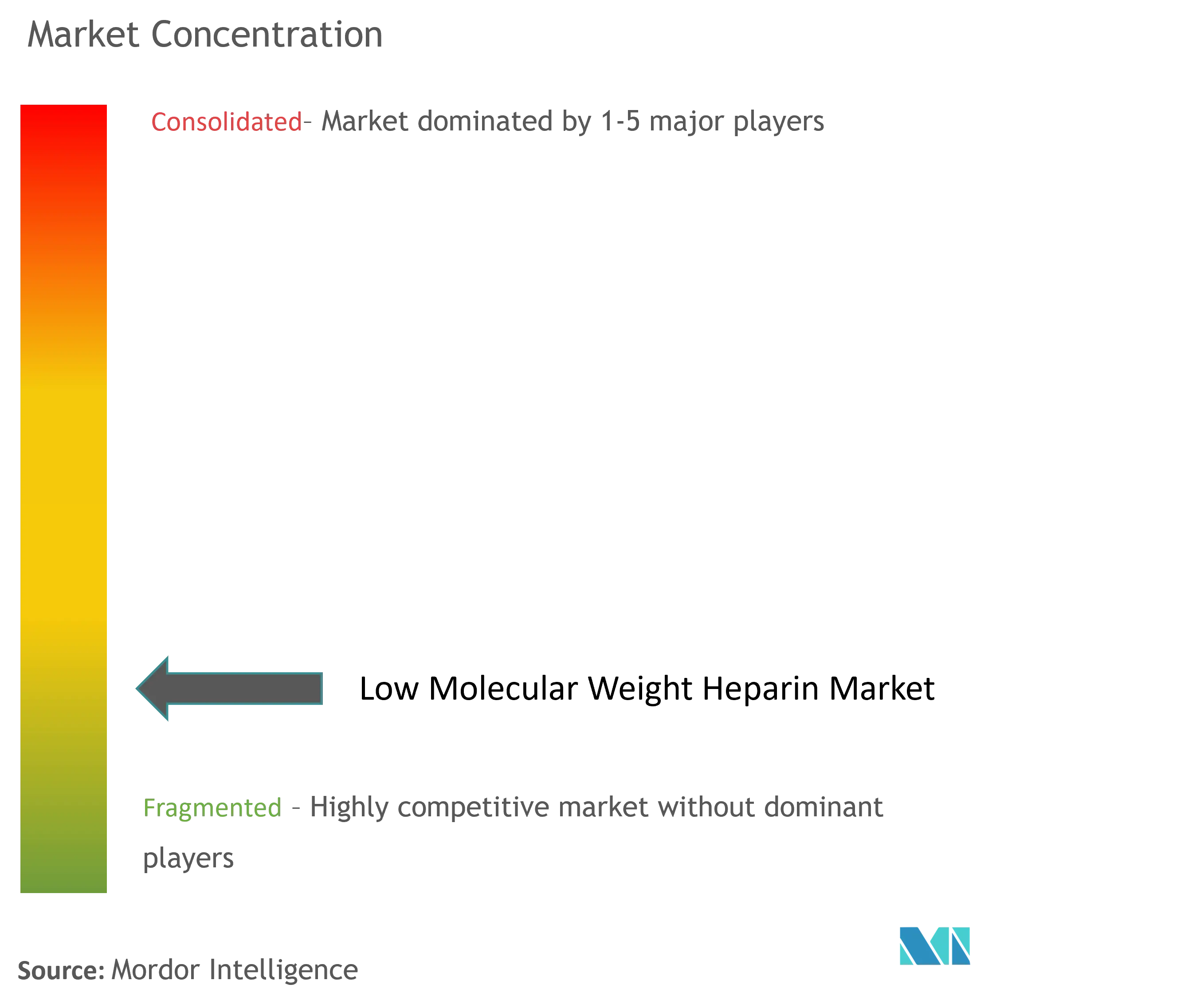
Recent Industry Developments
- August 2022: Momenta Pharmaceuticals Inc. announced the product approval of M-Enoxaparin from the US Food and Drug Administration (FDA). Momenta is developing M-Enoxaparin, a technology-enabled generic version of Lovenox, in collaboration with Sandoz, the generics division of Novartis AG.
- June 2023: Techdow USA launched 30 mg, 40 mg, 60 mg, 80 mg, 100 mg, 120 mg, and 150 mg strengths of generic Enoxaparin Sodium (Preservative Free) Prefilled Syringes for the prevention of thrombosis.
Global Low Molecular Weight Heparin Market Report Scope
As per the scope of the report, low molecular weight heparin (LMWH) is a class of anticoagulants. These anticoagulants are used to prevent blood clots and treat venous thromboembolism (deep vein thrombosis and pulmonary embolism) and myocardial infarction. According to the Nonclinical Development of Novel Biologics, Biosimilars, Vaccines, and Specialty Biologics, LMWHs are heparin salts with an average molecular weight of less than 8,000 Da; they have at least 60% of all chains have a molecular weight of less than 8,000 Da.
The LMWH Market is segmented by product type, application, end user, and geography. By product type, the market is segmented into enoxaparin, dalteparin, tinzaparin, fondaparinux, and others. By application, the market is segmented into deep vein thrombosis, acute coronary syndrome (ACS), pulmonary embolism, and other applications. By end user, the market is segmented into hospitals and clinics, ambulatory surgical centers, and other end users. By geography, the market is segmented into North America, Europe, Asia-Pacific, the Middle East and Africa, and South America. The report also covers the estimated market sizes and trends for 17 countries across major regions globally. For each segment, the market size is provided in terms of value (USD).
| Enoxaparin |
| Dalteparin |
| Tinzaparin |
| Fondaparinux |
| Others |
| Deep Vein Thrombosis |
| Acute coronary syndrome (ACS) |
| Pulmonary Embolism |
| Others (Aerial Thrombosis, Bypass Surgery, Kidney Dialysis, and Blood Transfusions ) |
| Hospitals |
| Clinics |
| Ambulatory Surgical Centers |
| Others (Pharmaceutical and Biotechnology Companies and Research Laboratories and Institutes) |
| North America | United States |
| Canada | |
| Mexico | |
| Europe | Germany |
| United Kingdom | |
| France | |
| Italy | |
| Spain | |
| Rest of Europe | |
| Asia-Pacific | China |
| Japan | |
| India | |
| Australia | |
| South Korea | |
| Rest of Asia-Pacific | |
| Middle East and Africa | GCC |
| South Africa | |
| Rest of Middle East and Africa | |
| South America | Brazil |
| Argentina | |
| Rest of South America |
| By Product Type | Enoxaparin | |
| Dalteparin | ||
| Tinzaparin | ||
| Fondaparinux | ||
| Others | ||
| By Application | Deep Vein Thrombosis | |
| Acute coronary syndrome (ACS) | ||
| Pulmonary Embolism | ||
| Others (Aerial Thrombosis, Bypass Surgery, Kidney Dialysis, and Blood Transfusions ) | ||
| By End User | Hospitals | |
| Clinics | ||
| Ambulatory Surgical Centers | ||
| Others (Pharmaceutical and Biotechnology Companies and Research Laboratories and Institutes) | ||
| Geography | North America | United States |
| Canada | ||
| Mexico | ||
| Europe | Germany | |
| United Kingdom | ||
| France | ||
| Italy | ||
| Spain | ||
| Rest of Europe | ||
| Asia-Pacific | China | |
| Japan | ||
| India | ||
| Australia | ||
| South Korea | ||
| Rest of Asia-Pacific | ||
| Middle East and Africa | GCC | |
| South Africa | ||
| Rest of Middle East and Africa | ||
| South America | Brazil | |
| Argentina | ||
| Rest of South America | ||
Key Questions Answered in the Report
How big is the Global Low Molecular Weight Heparin Market?
The Global Low Molecular Weight Heparin Market size is expected to reach USD 4.72 billion in 2025 and grow at a CAGR of 6.60% to reach USD 6.50 billion by 2030.
What is the current Global Low Molecular Weight Heparin Market size?
In 2025, the Global Low Molecular Weight Heparin Market size is expected to reach USD 4.72 billion.
Who are the key players in Global Low Molecular Weight Heparin Market?
Aspen Holdings, Changzhou Qianhong Bio-Pharma, B. Braun Medical, Inc., Pfizer, Inc. and Dr. Reddy's Laboratories Limited are the major companies operating in the Global Low Molecular Weight Heparin Market.
Which is the fastest growing region in Global Low Molecular Weight Heparin Market?
Asia-Pacific is estimated to grow at the highest CAGR over the forecast period (2025-2030).
Which region has the biggest share in Global Low Molecular Weight Heparin Market?
In 2025, the North America accounts for the largest market share in Global Low Molecular Weight Heparin Market.
What years does this Global Low Molecular Weight Heparin Market cover, and what was the market size in 2024?
In 2024, the Global Low Molecular Weight Heparin Market size was estimated at USD 4.41 billion. The report covers the Global Low Molecular Weight Heparin Market historical market size for years: 2019, 2020, 2021, 2022, 2023 and 2024. The report also forecasts the Global Low Molecular Weight Heparin Market size for years: 2025, 2026, 2027, 2028, 2029 and 2030.
Page last updated on:
Global Low Molecular Weight Heparin Market Report
Statistics for the 2025 Global Low Molecular Weight Heparin market share, size and revenue growth rate, created by Mordor Intelligence™ Industry Reports. Global Low Molecular Weight Heparin analysis includes a market forecast outlook for 2025 to 2030 and historical overview. Get a sample of this industry analysis as a free report PDF download.
